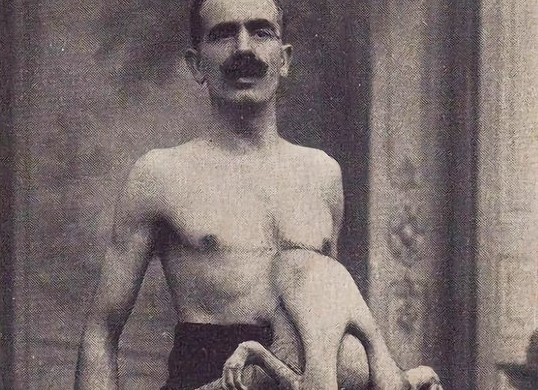During the early 1900s, Jean Libbera participated in sideshow performances alongside his brother Jacques. Jacques, a parasitic twin, was connected to Jean at the chest and stomach.

During the early 20th century, spectators at circuses and sideshows globally were fascinated by Jean Libbera, known as the "Double-Bodied Man." He featured a diminutive parasitic twin named Jacques emerging from his torso.
Jacques possessed two arms, two legs, and a partially developed head embedded in Jean's stomach. Allegedly, he relied entirely on Jean's bodily functions for survival. Consequently, Jean bore the lifelong responsibility of carrying his twin brother with him.
Nevertheless, despite his condition, Jean maintained a relatively ordinary life. He entered into matrimony, had four children, and lived until the age of approximately 50.
However, given the scarcity of records detailing Jean Libbera's life beyond sideshow advertisements, a significant portion of his narrative remains veiled in mystery.
The Double-Bodied Man Is Born
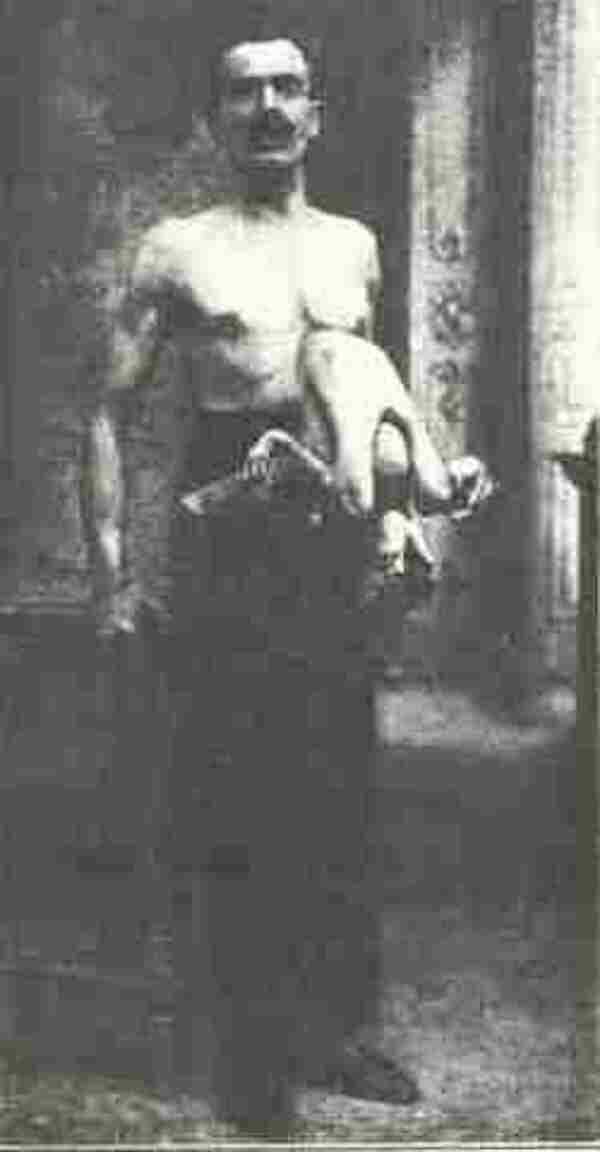
Born in Rome in 1884, Jean Libbera entered the world with a parasitic twin affixed to his abdomen. He was part of a family of 13 children, one of whom also had a parasitic twin but unfortunately did not survive past infancy.
Jacques, the twin of Libbera, was a vestigial parasite. This condition arises when an embryo incompletely separates into twins, leading to asymmetrical development in utero. The consequence is the smaller twin being attached to the larger, more developed one.
Parasitic twins, such as Jacques, belong to the category of conjoined twins. As per the Cleveland Clinic, conjoined twins are exceptionally rare, occurring in approximately one out of 50,000 pregnancies globally. Parasitic twins, on the other hand, constitute around 10 percent of conjoined twins and are reported to occur in fewer than one in a million births worldwide.
As vestigial twins commonly face mortality within the womb, modern medical practice often involves the post-birth removal of the parasitic twin. This intervention aims to safeguard the surviving twin from potential medical complications.
Yet, during the late 19th and early 20th centuries, individuals with vestigial parasites frequently took part in circus and sideshow performances. This is precisely the path that Jean Libbera chose to follow.
The Life Of Jean (And Jacques) Libbera
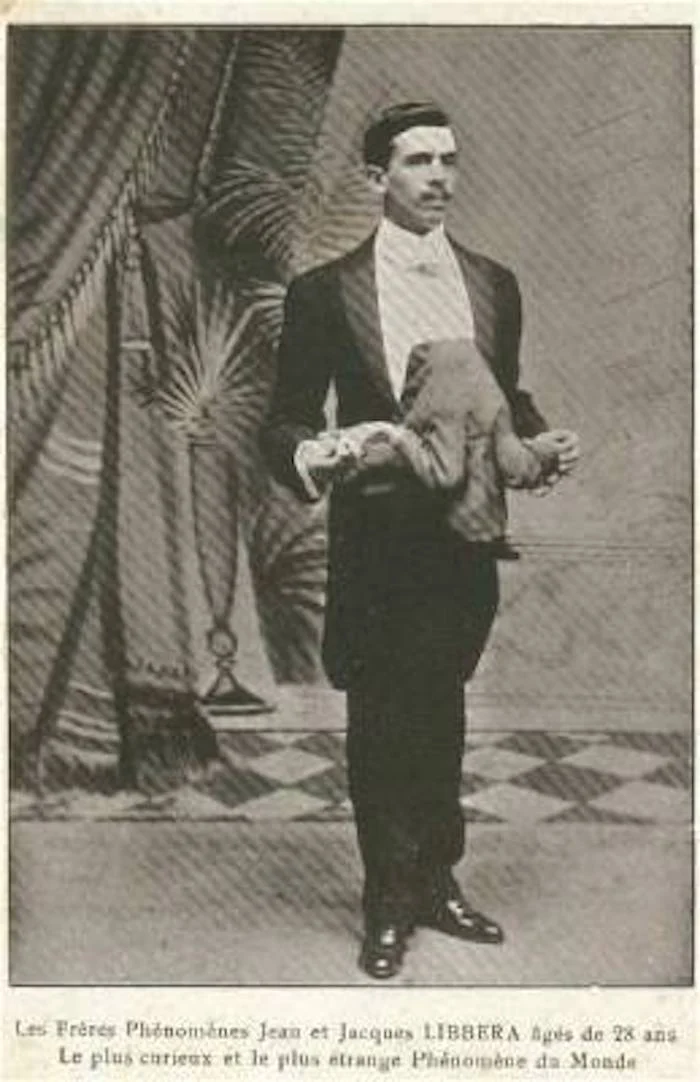
Jean Libbera matured into a traveling performer for "freak shows," earning fame as the "Double-Bodied Man" by showcasing his small twin to intrigued audiences at circuses and sideshows worldwide. Frequently, the brothers would don matching suits for their performances.
"I don't know if people really fainted when they saw Jean Libbera," quoted by the "freak show" photographer Diane Arbus, as documented in Rachel Adams' book "Sideshow U.S.A.: Freaks and the American Cultural Imagination." "He looked a bit rueful in a poster on the far wall, standing in a tuxedo sweetly holding the hands of his vestigial twin who grew, head inwards, sticking out of his abdomen and wore, the twin did, little patent leather shoes and a diaper to keep him from wetting his pants."
Jacques possessed two diminutive arms, two hands, two legs, and two feet. Although parasitic twins often lack consciousness, according to certain accounts, Jacques exhibited signs of life and could even move—albeit reliant on Jean for survival. Jean and Jacques shared everything quite literally, including circulatory and nervous systems.
In Marc Hartzman's book "American Sideshow," it is noted that pamphlets distributed at Jean Libbera's performances declared that an exceedingly thorough and comprehensive X-ray revealed Jacques' partially formed head embedded in Jean's stomach, measuring a mere six inches in circumference.
Nevertheless, given the scarcity of records about Jean-Jacques' life, it becomes challenging to discern precisely what was factual and what might have been embellished in the realm of show business.
Outside of the spotlight, Jean maintained a relatively ordinary life, purportedly concealing Jacques under a cloak whenever they ventured outdoors. Additionally, he formed a family and had four robust children with his wife.
In due course, Jean Libbera concluded his career in show business and returned to Italy. He passed away sometime between 1934 and 1936 at the age of approximately 50.
Other Conjoined Twins In The Circus
Although Jean Libbera and his brother Jacques constituted a rare case, they were by no means the sole conjoined twins to participate in European and American circus shows during the late 19th and early 20th centuries.
Among the initial documented instances of conjoined twins, and perhaps the most renowned, involved the Bunker twins, Chang and Eng. The term "Siamese twins" was originally coined in connection to these brothers, who were born in Siam (now known as Thailand) in 1811.
Both men, born in perfect health, were joined by a few inches of tissue at the sternum and waist.
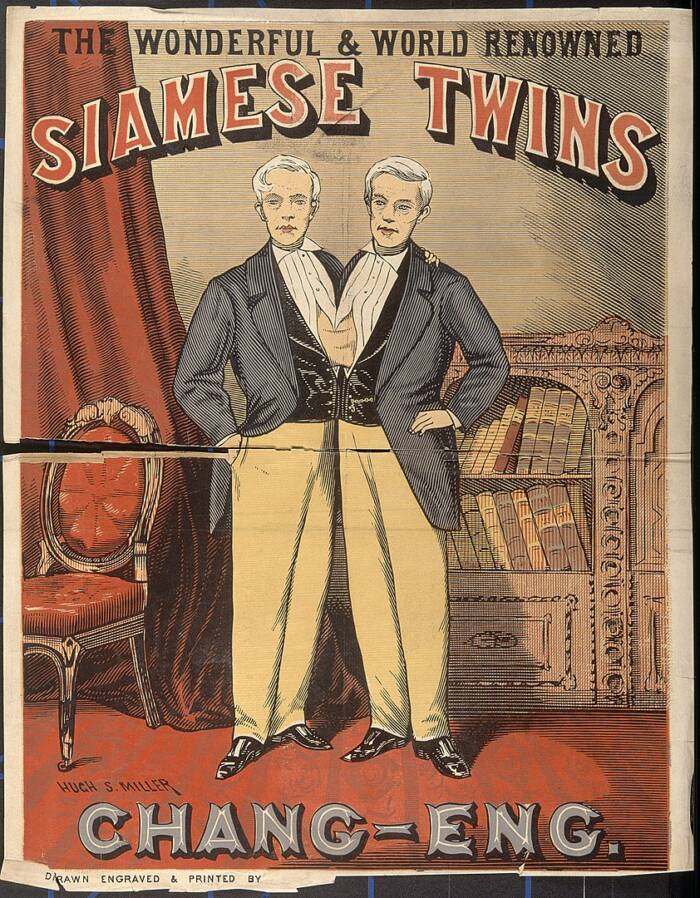
In 1829, the Bunker twins departed Siam with a British sponsor to embark on a global tour, showcasing their act in sideshows and circuses. They even had a stint at P.T. Barnum's American Museum.
Ultimately, the Bunker brothers established a residence in North Carolina, married two sisters, and collectively fathered 21 children.
Among the poignant tales of conjoined twins in the early circus era, the Hilton twins, Daisy and Violet, stand out. Born in England in 1908, the girls were conjoined at the hips and pelvis. Born to an unmarried mother, shortly after their birth, Mary Hilton, their mother's employer, essentially purchased the twins with the intention of showcasing them for entertainment.
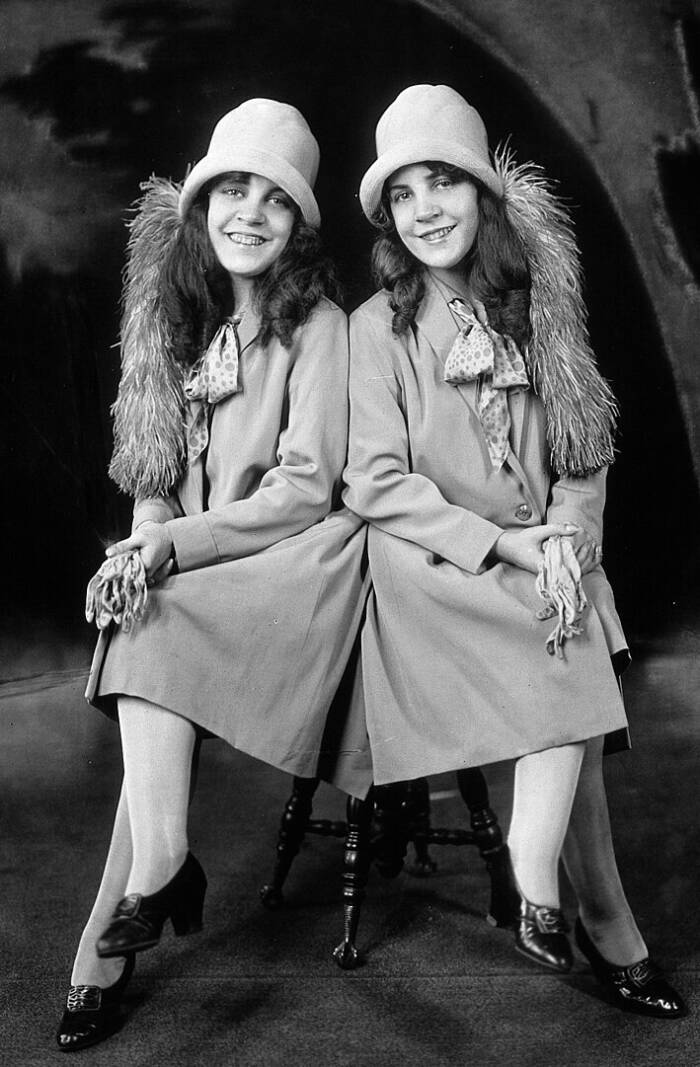
Commencing their performance and touring career at the tender age of three, Daisy and Violet found themselves under the stringent control of Mary Hilton. The twins were effectively enslaved by Mary, her husband, and later by Mary's daughter following her demise. They endured grueling hours of work without compensation and were subjected to beatings for any disobedience to their captors.
However, in 1931, the sisters filed a lawsuit against their managers and successfully gained their emancipation. Subsequently, they ventured into vaudeville and burlesque performances as an independent act.
Subsequently, their narrative has served as inspiration for various films and even a Broadway musical titled Side Show. Premiering in New York in 1997, the musical received multiple Tony Award nominations.
